
How to Clean and Descale an Espresso Machine
Great beans and a great grind both contribute to making a satisfying shot of espresso, but learning how to clean an espresso machine can help prevent minerals and oils from building up and altering the taste of your beverage. A regular cleaning and understanding how to descale your espresso machine can make all the difference.
WAYS TO CLEAN AN ESPRESSO MACHINE
For the best tasting espresso, an espresso machine that’s used often should be wiped down daily and the portafilter and basket should be rinsed out with every use. In addition, a deeper clean, which involves washing the individual parts, should take place weekly to help keep the machine and its parts free of residue and impurities.
Descaling your espresso machine, either with vinegar or a descaling solution, at least once a year, is also key to maintaining your appliance and ensuring delicious results.
The items you’ll need to keep your espresso maker clean are simple and straightforward. In addition to the vinegar or specialized solution you’ll need for descaling, a daily or deep cleaning requires only a soft, clean towel and a little soap and water to get the job done.
TIP: START WITH GREAT WATER
Espresso only has a few ingredients so everything you put in your espresso maker matters, including water. Starting with good filtered water can not only improve taste, but it can also help minimize the concentration of dissolved minerals in your espresso machine. If you are looking for filtered water straight from the refrigerator, try filters such as KitchenAid® Refrigerator Water Filters.
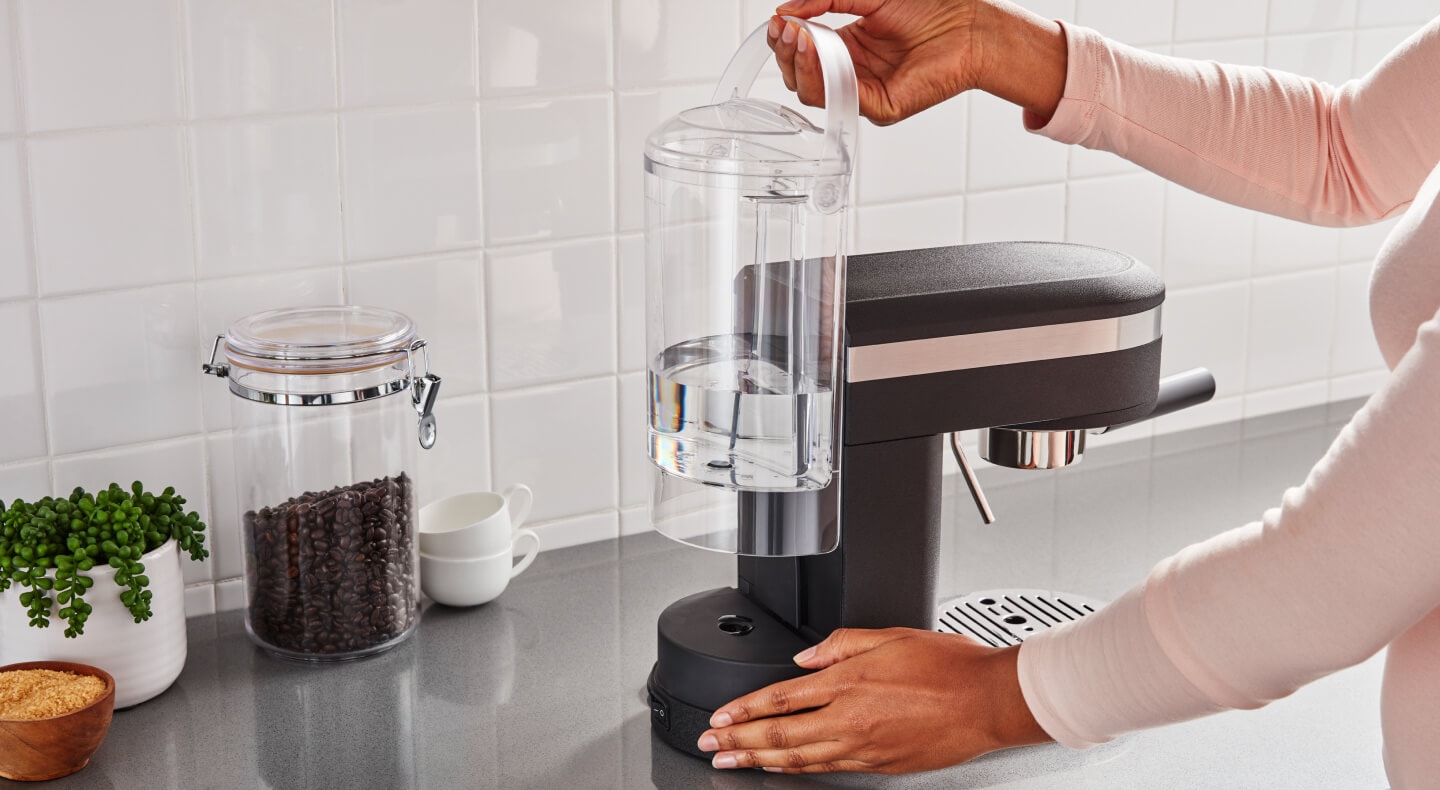
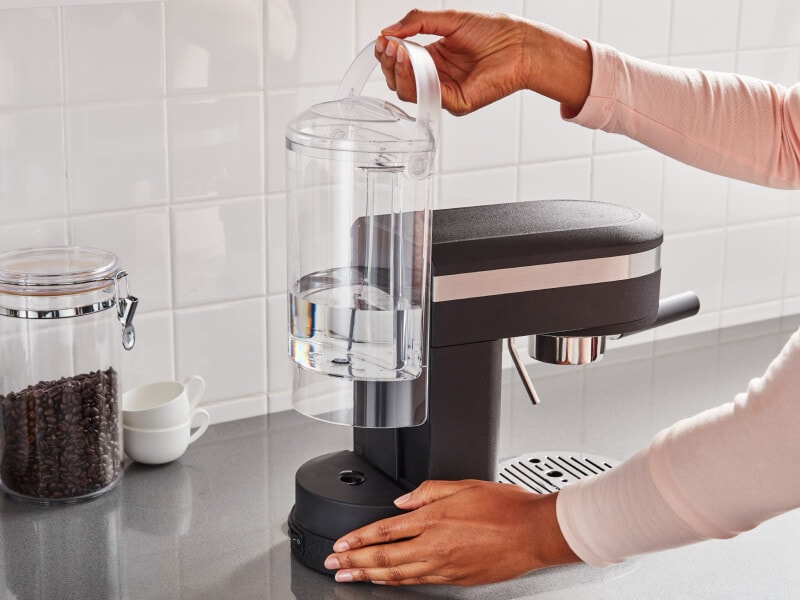
HOW TO DESCALE AN ESPRESSO MACHINE
Descaling is the process of removing mineral buildup from your espresso machine by flushing vinegar and water or a descaling solution through it. This type of cleaning should take place at least once a year, but if you’re not using filtered water, or your water is hard and has a higher mineral content, you might need to descale more often.
WHAT CAN YOU USE TO DESCALE AN ESPRESSO MACHINE?
A descaling solution is ideal, but if you don’t have any, and your owner’s manual indicates that vinegar won’t harm your machine, you can make a cleaning solution containing the ratio of vinegar and water recommended for your type of machine.
ESPRESSO MACHINE DESCALING INSTRUCTIONS
To descale your espresso machine, fill the water reservoir with a descaling solution, following the product’s instructions. Then run a brew cycle (without coffee grounds) to help clear mineral buildup. Rinse the reservoir and refill it with fresh water, then run another cycle to fully flush the system.
There are many different types of espresso machines, so before you begin descaling your espresso machine be sure and check your owner’s manual for the proper instructions on how to descale an espresso machine for your make and model.
WHAT HAPPENS IF YOU DON’T DESCALE YOUR ESPRESSO MACHINE?
If you don’t descale your espresso machine it can cause mineral buildup that may affect the taste of your espresso and keep your machine from running optimally. Descaling your appliance at least once a year or more, if you’re not using filtered water, helps remove impurities while ensuring that your espresso machine functions properly.
SEMI-AUTOMATIC ESPRESSO MACHINE DESCALING INSTRUCTIONS
Use the following steps to descale a semi-automatic espresso machine such as a KitchenAid® semi-automatic espresso machine with a descaling solution.
(Please note, if you need to descale a coffee maker, the steps will be a bit different.)
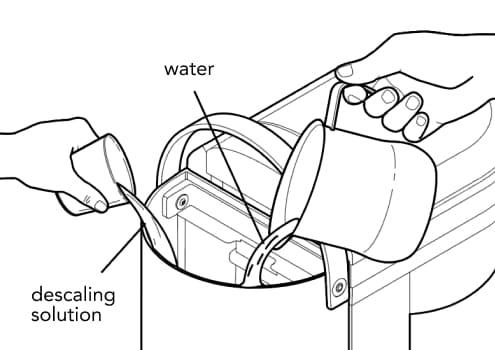
STEP 1. FILL WATER TANK WITH DESCALING SOLUTION
Fill a clean water tank with the volume of descaling solution and water recommended.
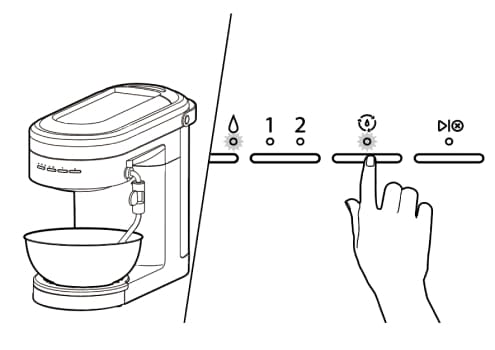
STEP 2. START THE CLEAN CYCLE
Place a container below the group head and steam wand to catch the water and cleaning solution, then press the Clean cycle button.
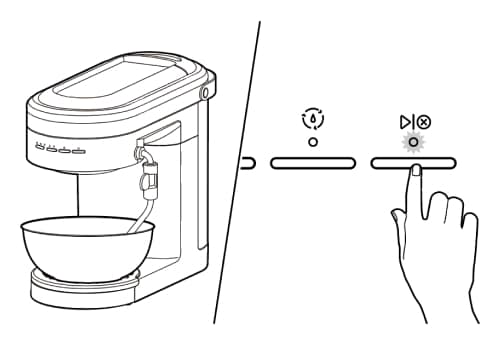
STEP 3. REPEAT
Empty the container and repeat. How many times you need to repeat the descaling process depends on the soil level of your machine and the manufacturer’s instructions. Some machines have an indicator light to let you know when it’s time to descale. If your machine is sputtering or the liquids aren’t flowing freely, this is another sign that your machine might need to be descaled.
If you’re going on vacation and you won’t use your machine for a while, you might want to descale your espresso machine when you return to flush out any deposits that might have accumulated while you were away.
SHOP KITCHENAID® SEMI-AUTOMATIC ESPRESSO MACHINES
Enjoy the routine of brewing your morning espresso when you use a KitchenAid® semi-automatic espresso machine. Explore options to find the right fit for your routine.
FULLY-AUTOMATIC ESPRESSO MACHINE DESCALING INSTRUCTIONS
Descaling your KitchenAid® fully/super-automatic espresso machine is simple. All you need to do is fill the water tank with water and a descaling solution, select the Descaling setting on the menu display and follow the instructions on the screen.
Specific descaling instructions vary by model, so be sure to consult your product manual regarding descaling. Use the following instructions to descale a KitchenAid® fully-automatic espresso machine.
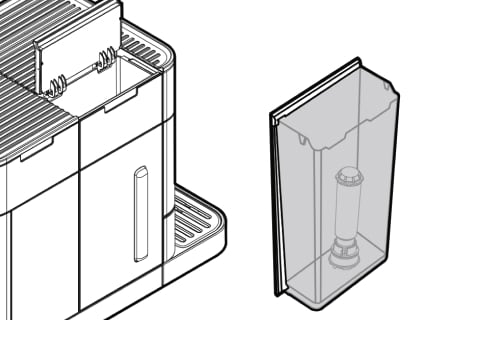
STEP 1: FILL WATER TANK WITH DESCALING SOLUTION AND WATER
Before you begin the descaling process on your machine, fill the water tank with 0.5L of water, then add the amount of descaling solution indicated on the product’s packaging.
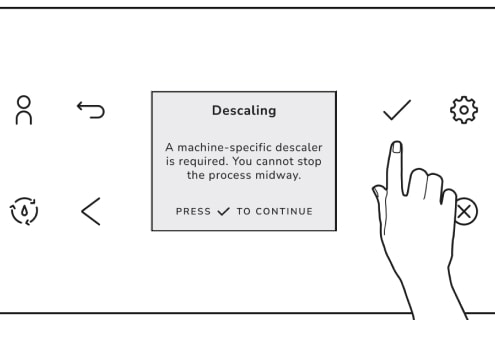
STEP 2: SELECT DESCALING ON CLEANING MENU
Using the espresso machine control panel, select the Descaling setting on the Cleaning Menu.

STEP 3: PLACE A LARGE CONTAINER UNDER THE BEVERAGE DISPENSER
Descaling solutions may stain parts of your espresso machine, so it is important to use caution. To prevent splashing and spills, place a large bowl or tub beneath the beverage dispenser.
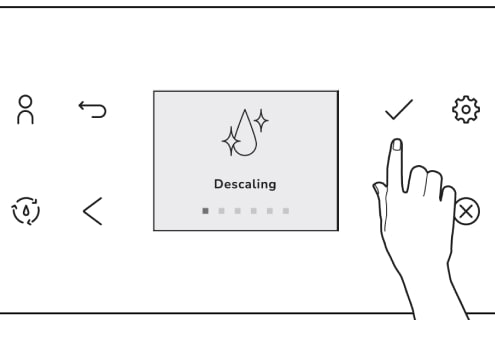
STEP 4: FOLLOW INSTRUCTIONS ON THE MENU DISPLAY
Your espresso machine’s display menu will provide instructions for the rest of the descaling process. Follow the instructions provided through the duration of the process.
SHOP KITCHENAID® FULLY-AUTOMATIC ESPRESSO MACHINES
Step into a world of rich, flavorful espresso beverages with the push of a button when you use a KitchenAid® fully-automatic espresso machine. Explore the lineup of fully-automatic machines to find the perfect partner for your breakfast ritual.
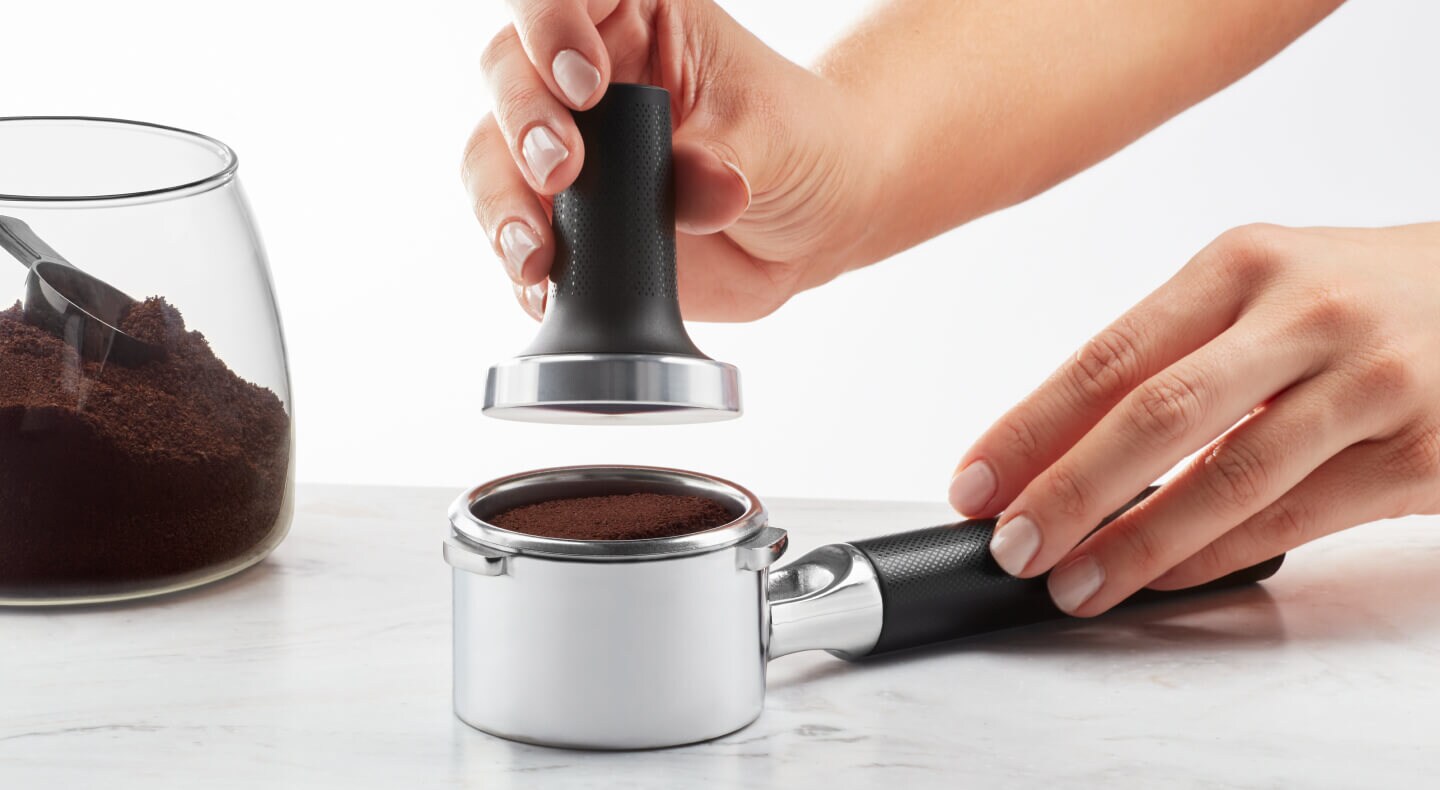
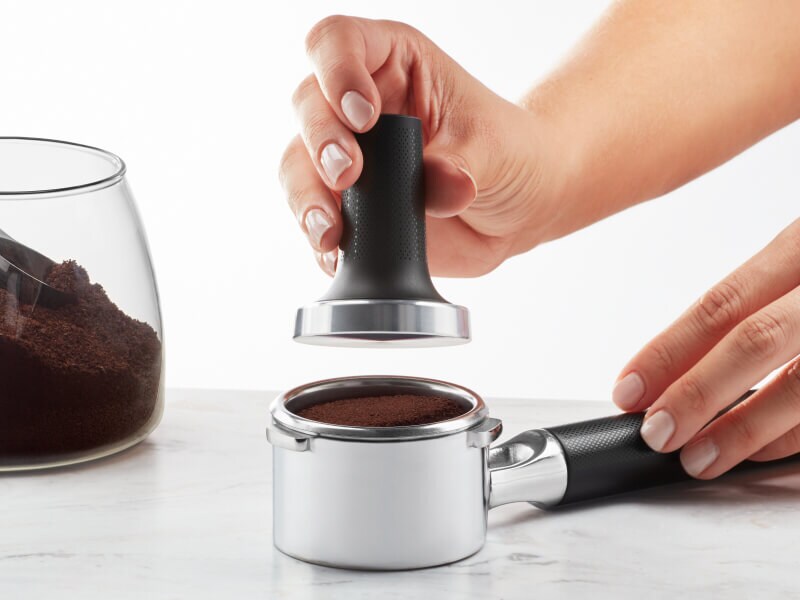
HOW TO CLEAN AN ESPRESSO MACHINE
Before you start cleaning your espresso machine, it’s important to understand what parts are included in it and whether or not they are dishwasher safe, or should be cleaned by hand.
Two of the most important parts of an espresso machine are “the group” or “group head” which is the heart of the machine and the “portafilter,” which holds the coffee grounds, and is set inside a handle. These two parts connect the water and grinds to create the espresso. The portafilter should be tapped and rinsed to empty it of any residual grounds every time your machine is used.
The steam wand, which is used to heat and froth milk, should be purged and wiped down after every use and should be rinsed with water after you’re done brewing. Learn more about how to clean a milk steamer or frother wand.
A KitchenAid® semi-automatic espresso machine includes the following parts:
Espresso machine
Portafilter
Coffee scoop
Tamper
Steam wand
Milk pitcher
Water tank
4 filter baskets
Drip tray
Cleaning brush
Milk tank
WHAT CAN YOU USE TO CLEAN YOUR ESPRESSO MACHINE?
Use a clean, soft, damp cloth to wipe the exterior of your espresso machine. Place the drip tray, portafilter, filter baskets, milk pitcher and drip tray plates in a sink of warm, soapy water to wash, then rinse clean. You can dry them with a cloth but avoid using abrasive cleansers or scouring pads.
HOW OFTEN SHOULD YOU CLEAN YOUR ESPRESSO MACHINE?
If you consistently use your espresso machine in your morning routine, it’s best to wipe it down daily. Clean the steam wand and rinse the portafilter and basket after each use. You can wash the other parts of your appliance in warm, soapy water on a weekly basis.
For a deeper clean, consider descaling your espresso machine once a year—or more often if you’re not using filtered water—to help prevent mineral buildup. You may have an indicator light that alerts you when to descale. If you notice your appliance isn’t running as smoothly as normal, descaling may help resolve that issue.
ESPRESSO MACHINE CLEANING INSTRUCTIONS
Before you begin a deep cleaning of your espresso machine, make sure that the machine and its accessories have cooled off and the machine is unplugged. Then follow these step-by-step instructions.
NOTE: Never use abrasive cleansers or scouring pads to clean your espresso machine.
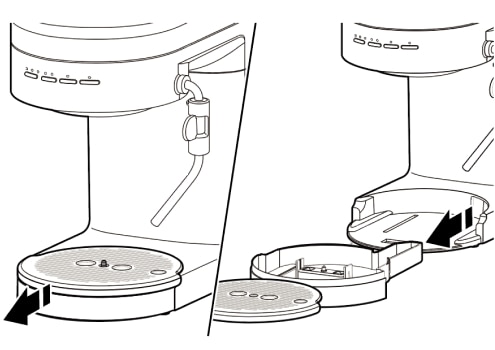
STEP 1. EMPTY THE DRIP TRAY
When the drip tray indicator becomes visible, empty the drip tray.
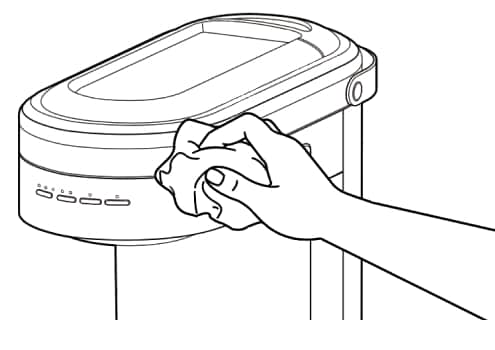
STEP 2. WIPE DOWN THE ESPRESSO MACHINE
Wipe the espresso machine and the group head with a clean, soft, damp cloth.
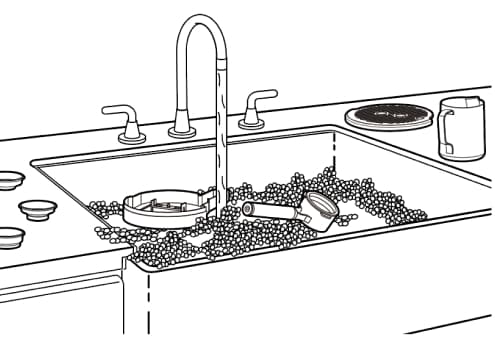
STEP 3. WASH ESPRESSO MACHINE PARTS
Wash the drip tray, portafilter, filter baskets, milk pitcher and drip tray plates in warm, soapy water. Rinse with clean water. Dry with a soft cloth.
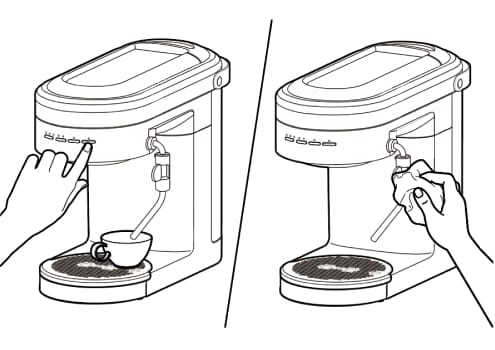
STEP 4. CLEAN THE STEAM WAND
Clean the steam wand after every use by selecting water. Position the wand over a cup or the drip tray and press the start/cancel button. Wait 3-5 seconds, then press the button again to stop. Wipe the wand with a soft, damp cloth.
Armed with a clear understanding of how to clean an espresso machine, you’ll be making delicious, “barista-style” espresso in your own kitchen, shot after shot. Shop the complete coffee collection from KitchenAid brand for more inspiring brewing possibilities.
SHOP POPULAR ESPRESSO MACHINES FROM KITCHENAID BRAND
Whether you’re brewing a shot of robust espresso or crafting a coffee shop favorite at home, KitchenAid brand has a full lineup of espresso machines to explore.
Enjoy smooth lattes, rich Americanos and tasty cappuccinos just the way you like with KitchenAid® semi- and fully-automatic espresso machines designed to help you brew exceptional coffee drinks at home.

